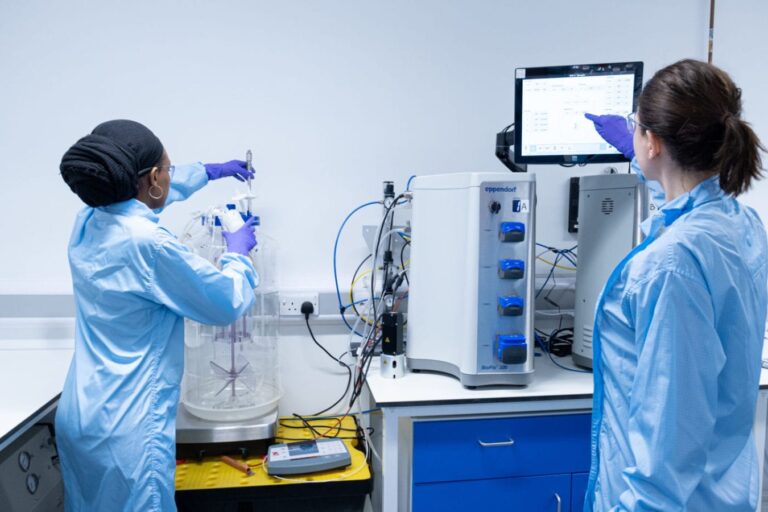
April 2024 merged scheme – what’s it all about?
The merged R&D scheme broadly follows the existing RDEC regime, by providing relief by way of an ‘above-the-line’ credit.
In line with the existing RDEC regime, the value of the merged scheme credit will be more predictable than existing SME claims as the tax benefit will not depend on a company’s profit or loss position – the benefit will simply be the gross tax credit, less corporation tax on the credit.
Additionally, this credit is recognised as taxable income, so is more visible in a company’s accounts, providing a benefit over the existing SME regime.
What is the tax benefit of the merged R&D scheme?
The gross taxable credit will be equal to 20% of the qualifying R&D expenditure. This amount is recognisable as income in a company’s accounts. As this income is a taxable credit, the net (cash) benefit to claimants will be equal to the gross credit, less corporation tax on the credit.
For profit-making companies with profits above £50,000, corporation tax will be at the main rate (25%), and for companies with profits below £50,000, corporation tax will be at the small profits rate (19%). For loss-making companies, the rate of notional tax on the gross credit will also be at the small profits rate (19%).
| Profit making (profits above £50,000) | Profit making (profits below £50,000) | Loss making | |
| R&D expenditure | £500,000 | £500,000 | £500,000 |
| Gross credit (20%) | £100,000 | £100,000 | £100,000 |
| Deduct notional corporation tax | £100,000 x 25% = £25,000 (main rate) | £100,000 x 19% = £19,000 (small profits rate) | £100,000 x 19% = £19,000 |
| Net benefit | £75,000 | £81,000 | £81,000 |
| Benefit rate | 15% | 16.2% | 16.2% |
As a result, the net benefit for profit-making companies equals 15% and 16.2% for loss-making companies and companies with profits (excluding the gross credit) less than £50,000.
Where a company is loss making, and therefore does not have a corporation tax liability for the accounting period, a notional tax deduction (equal to the corporation tax chargeable on the credit at the main rate of corporation tax) is withheld.
Who is eligible to claim under the merged R&D scheme?
To make a claim, a company must be carrying on a trade, incurring qualifying expenditure that is allowable as a deduction in calculating the taxable profits of the trade and must not be an ineligible company (a charity, an institution of higher education, a scientific research association, a health service body or any other body prescribed by the Treasury).
Payment of the credit is subject to the company being a going concern (when the claim is made), not having outstanding PAYE or National Insurance liabilities and not having an open tax enquiry.
A company is a going concern when it’s latest published accounts are prepared on a going concern basis and nothing in those accounts indicates that they were prepared on that basis only because of an entitlement (or expected entitlement) to a credit.
What is ERIS and what are the tax benefit rates?
Enhanced R&D Intensive Support (ERIS) is available to loss-making small or medium sized enterprises (SMEs) whose R&D expenditure (plus that of any connected companies) accounts for at least 30% of their total expenditure (plus that of any connected companies) in a given accounting period (this is the intensity condition). Companies who satisfy this requirement are deemed ‘R&D intensive’.
For the purposes of calculating total expenditure and qualifying R&D expenditure, amounts bought into account in line with section 1308 of CTA and any amounts not deductible for Corporation tax purposes will require adjustment from the company’s profit and loss account.
ERIS operates in line with the existing SME and R&D intensive tax credit schemes by allowing a further deduction (the R&D enhancement) against trade losses and then allowing some of the losses to be surrendered for a repayable tax credit.
What is the tax benefit of ERIS?
ERIS will allow a further deduction (R&D enhancement) for qualifying R&D expenditure equal to 86%, increasing the company’s trade loss.
Subject to the PAYE cap, a tax credit can be obtained by surrendering the lower of the actual loss in the period or 186% of the R&D expenditure (the enhanced R&D expenditure). The total resulting from this comparison is the ‘surrenderable loss’.
The ERIS tax credit is worth 14.5% of the surrenderable loss. This credit is not treated as taxable income.
| Loss making (£0 loss) | Loss making (£600,000 loss) | |
| R&D expenditure | £500,000 | £500,000 |
| R&D enhancement (86%) | £430,000 | £430,000 |
| Enhanced R&D expenditure | £930,000 | £930,000 |
| Adjusted loss | (£430,000) | (£1,030,000) |
| Surrenderable loss (lower of enhanced R&D expenditure and adjusted loss) | £430,000 | £930,000 |
| Tax credit (14.5%) | £62,350 | £134,850 |
| Tax benefit rate | 12.47% | 26.67% |
Depending on the starting loss position before considering the R&D enhancement, ERIS will be worth between 12.47% and 26.97%.
PAYE cap – what is it and how does it work?
PAYE/NIC (National Insurance Contributions) caps existed in various forms in both the SME and RDEC regimes, and an updated version applies to both the merged scheme and ERIS. The PAYE cap was originally introduced with the intention of preventing fraudulent R&D claims involving companies which were not directly undertaking R&D activities in the UK (i.e. companies with little or no employment in the UK who might have been channelling funds through the UK in order to access R&D relief). The continued aim of the cap remains to ensure R&D targeted relief can be delivered to eligible companies undertaking R&D in the UK.
This cap is equal to £20,000 + 300% of the company’s relevant PAYE and NIC liabilities, so takes the generosity of the PAYE cap previously featuring within the SME R&D regime, rather than the previous RDEC cap.
PAYE cap – merged scheme
The effect of the PAYE cap on the merged scheme limits the amount of the credit payable in the accounting period in which it is claimed.
In a similar manner to the existing RDEC regime, any payable credit in excess of the PAYE cap will be carried forward and treated as a research and development expenditure credit in future accounting periods. This means the carried forward amount can be offset against future corporation tax liabilities.
PAYE cap – ERIS
A difference in operation compared with the merged scheme is that the PAYE cap for ERIS does not allow amounts in excess of the cap to be carried forwards.
Further, claims for tax credit in excess of the PAYE cap will be invalid.
Exemption from PAYE cap
An exception to the PAYE cap exists for companies engaged in creating or managing intellectual property. To qualify for this exemption, condition A requires a company to create, prepare or perform significant management activities in relation to relevant intellectual property it has created and holds. Such activities must be undertaken wholly or mainly by employees of the company, not including directors.
In addition, condition B mandates that the total R&D expenditure relating to connected subcontractors and Externally Provided Workers (EPWs) must not exceed 15% of the total qualifying R&D expenditure in the period.
In order for the exemption to apply, both conditions must be met.
To discuss the merged scheme or any matter relating to R&D claims, please contact Rob Waterhouse.
Written by











